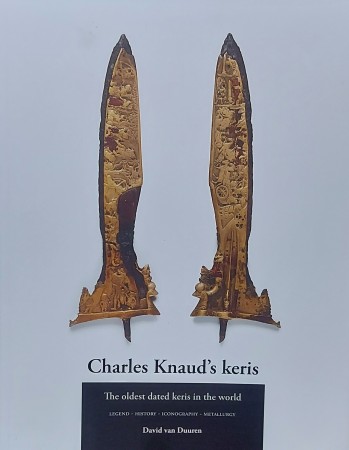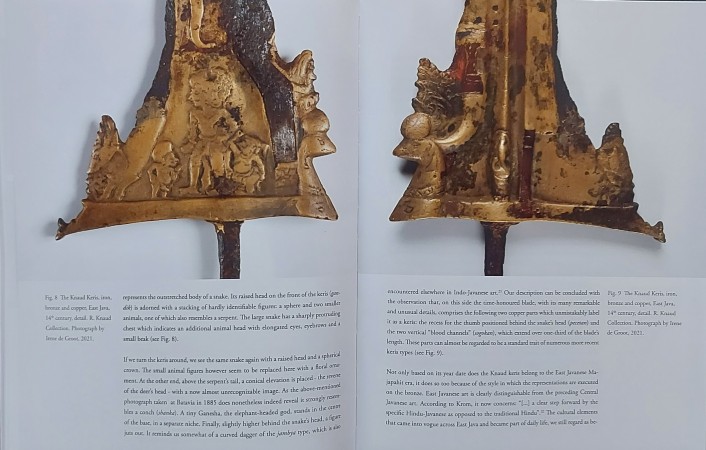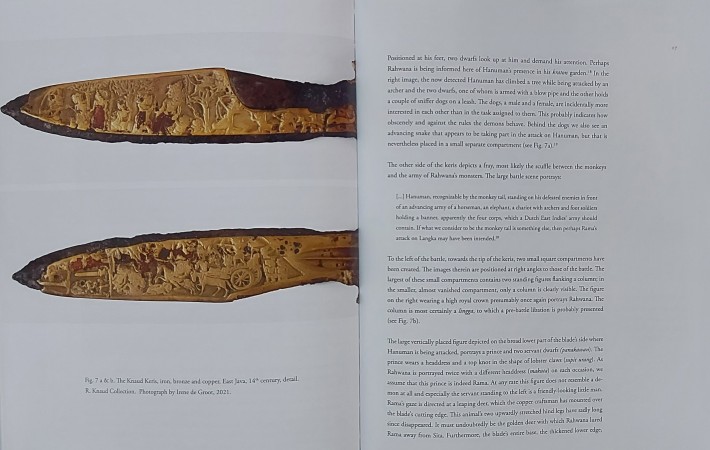CHARLES KNAUD'S KERIS. THE OLDEST DATED KERIS IN THE WORLD.
LEGEND-HISTORY-ICONOGRAPHY-METALLURGY.
Duuren, David van.
After more than 100 years, a long-lost keris resurfaced in the Netherlands: the legendary "Knaud kris". In literature, this item was named after Charles Knaud, who acquired it at the end of the 19th century as a gift from a Javanese ruler. This extra-ordinary keris won an award during an art and craft exhibition held at Batavia (1884), was cast in plaster by the museum of the Batavian Society of Arts and Sciences and discussed by the renowned Indologist dr. N.J. Krom, Head of the Archaeological Service in the Dutch East Indies, in his standard work (1920) on the art of ancient Java. The Knaud keris is now on display at the Amsterdam Tropenmuseum, where it is kept on a long-term loan. This publication is the first to present the historico-cultural uniqueness of this keris along with its adornments and date. It is comprehensively dealt with beginning with its anecdotal acquisition by C. Knaud on Java up to its discovery in the vault of a Dutch bank. The rich symbolism and mythological scenes are discussed in detail, as is the laboratory research into the metal and metal alloy utilised when forging the blade. An analysis confirms N.J. Krom's presumption it is not only a very special artefact created in East Java during the 14th century but also that, considering its history and style, it must be linked to the temple site of Panataran which dates from the Majapahit era.






